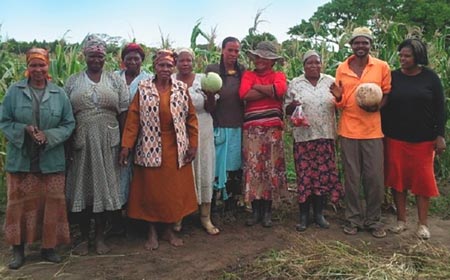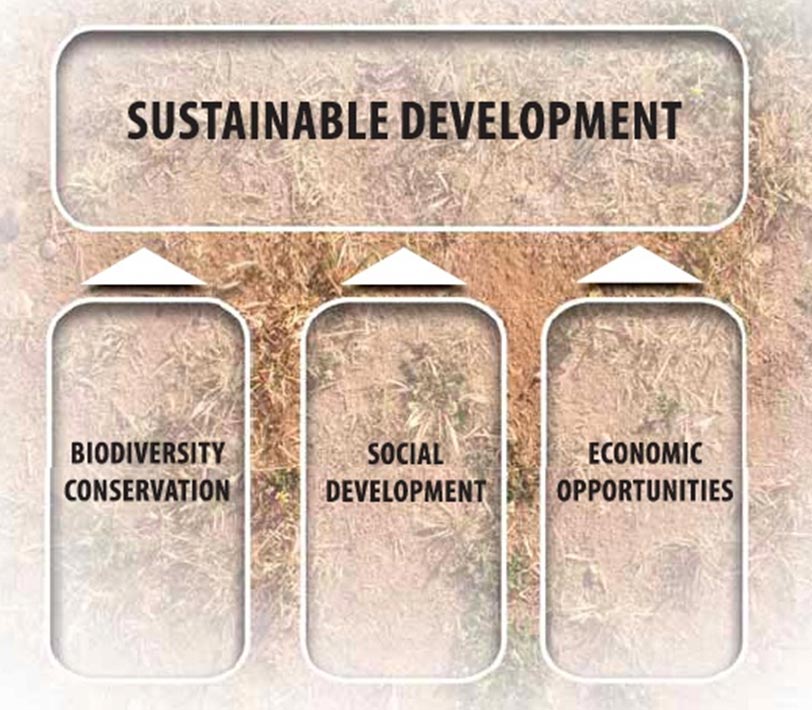People and Parks: Current status
Focus of latest decade
Much of the focus of the last decade appears to have been concentrated on land claims and co-management. Whilst both these elements are important, they have caused the attention to be more on claimants than the broader communities who simply need access to natural resources for basic services such as firewood. There have been thousands of hectors of park land that have been restored to its rightful owners. This has not just improved the socio-economic status of these communities but has fundamentally served to restore their dignity. This process has also ensured that the rural communities are not just stakeholders but real partners and can now shape their own destiny.
The restitution process has, however been very slow and hampered development plans in some parks. In some cases, where claims have been settled, communities still need to be compensated. Urgent intervention is needed in this regard so as not to undermine the huge gains of the last decade.
Whilst many have embraced the values of co-management, minimal success has been achieved to ensure active participation of the communities in the management of parks. On the other hand, people now understand their rights and, access to parks by communities have greatly improved. Some parks have developed co-management agreements and although many are yet to sign these, there has been significant progress in as far as creating awareness about the need for collaboration between park managers and communities.
There is also lack of consistency amongst the provinces as far as the development of co-management agreements go. Some provinces have moved very fast whilst other communities are still seemingly not adequately informed. The DEA has worked hard to ensure that a National Co-Management Framework is in place and have developed pro-forma settlement agreements to simplify processes. The programme has had substantial support from politicians, national and regional conservation agencies, NGOs, donors and beneficiary communities at large.
The iSimangaliso Art Project
In recent years funding from the Expanded Public Works Programme (EPWP) has seen a change from large, top-down projects to smaller projects that are based on broader participation. This approach encourages labour intensive activities. It has led to the creation of many community training programmes, thousands of jobs, as well as Small, Medium and Macro Enterprises (SMMEs). The focus has shifted to the strengthening of local communities to empower them to manage their own natural resource base.
Some members of communities are earning a living from either the direct sale of natural resource products or are partners, or owners of enterprises. Although not very significant at this stage, some of the income earned is reinvested into the improving the community’s social infrastructure.
Partnerships between new land and concession owners with private operating partners have created much needed jobs and on-the-job training. These well organised operations, despite some challenges, have been incubators for skills development and promise to be real engines of socio-economic development for the communities living around parks. There is however a need to produce standard guidelines for the private sector and communities so that they can work together without conflict and with a mutual understanding of how the other works. Income from these partnerships has also provided capital for spin-off enterprises, whose successful development poses its own new challenges.
Many of the natural resource products require marketing and promotion as well as improved linkages to the private sector and essential park services. Existing CPPP initiatives within the parks can provide functional models and opportunities for the programme to progress further. There is, however, also a need to maximize the flow of benefits to the broader community, as current initiatives tend to benefit only employees.
iSimangaliso Food Gardens
SMMEs need to be used and promoted by all parks and in cases where they have little capacity or qualifications, they need to be empowered if the high levels of poverty and unemployment are to be addressed. It is also important to note that, there are local entrepreneurs who are willing to work with communities in implementing development projects. When looking for private partners, it is important to recognize that it is not just external investors who should be considered as partners.
At a park level, the key institutions have been the park forums. Although not active in all the parks, the forums, through their representatives, have played a huge role in influencing policies both at agency and national level. Their continued relevance however, depends on the commitment of the agencies to support them.
The land restitution process has also resulted to a shift of power in favour of communities. Under new ownership arrangements, while the management status of park remains with authorities, the communities are encouraged into partnership arrangements that ensure commitment. There is still, however an imbalance of power when it comes to the management of resources and the decision making processes.
Reportedly, one of the main reasons for conflict between communities and authorities is the failure of Park Managers to recognize the ownership rights of the people. Consequently, the programme has highlighted and promoted local institutional development and the development of local communities. Regional and village-based park management committees have been established to help with and improve the working relationship between the communities and park managers.
Despite the recent achievements, a more organised and focused approach is needed to ensure that all projects are developed in line with the P&PP objectives and sub-development agenda. The programme also needs long-term commitment and reliable funding. Currently projects are funded for short periods of 2 to 3 years, and most of them need more long-term financing in order to achieve long-term results and benefits.
The aim of the programme is therefore to find sustainable solutions to all of these challenges. There is a need for better capacitated CBO’s to ensure the sustainability of the P&PP. There is also a great need for research and monitoring in order to continually define exactly what is needed to make the programme a success.
Further to this, the various social, economic, cultural and ecological impacts of the programme must be continuously evaluated and improved upon in order to ensure that the programme continues to thrive.





